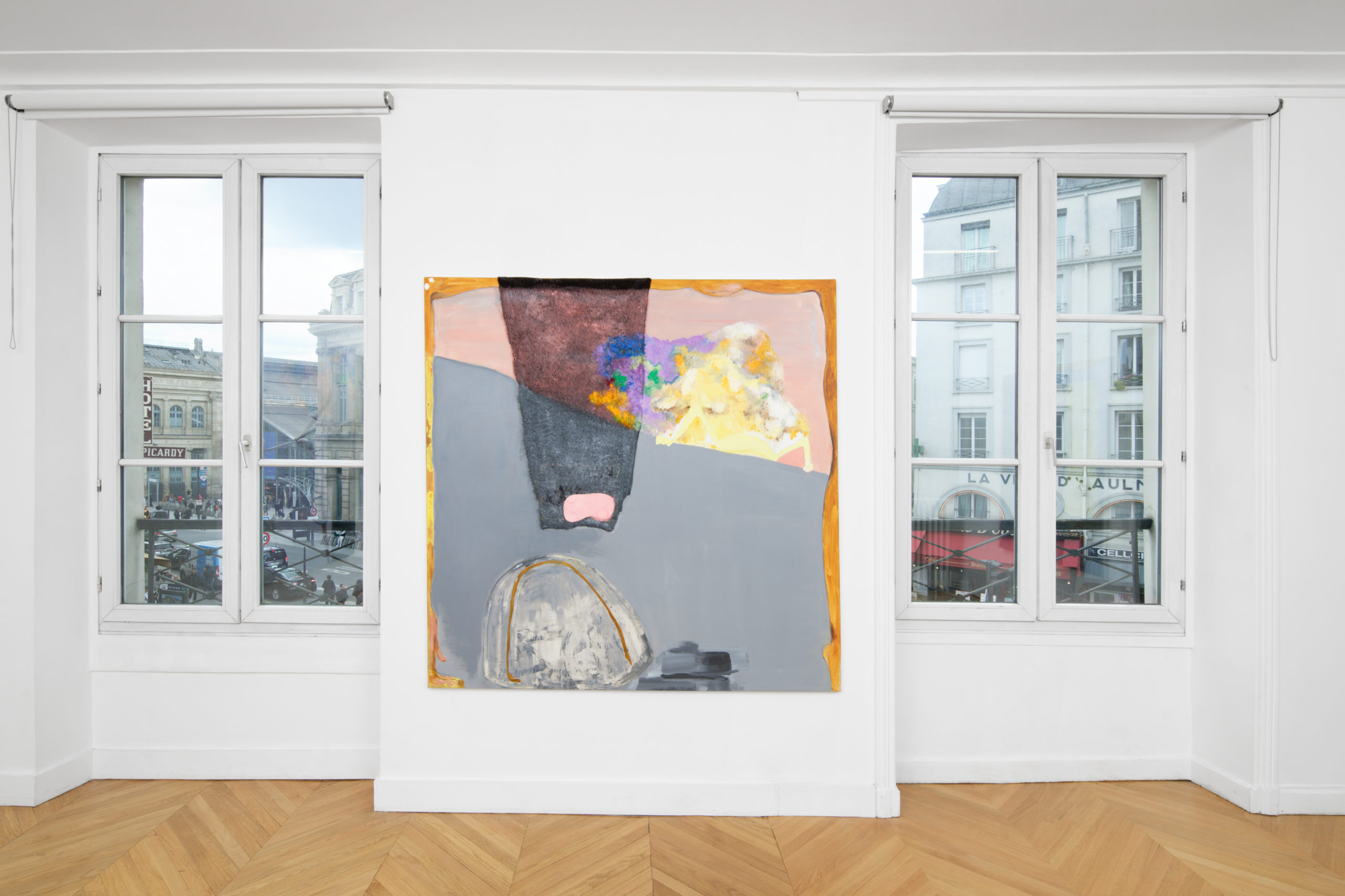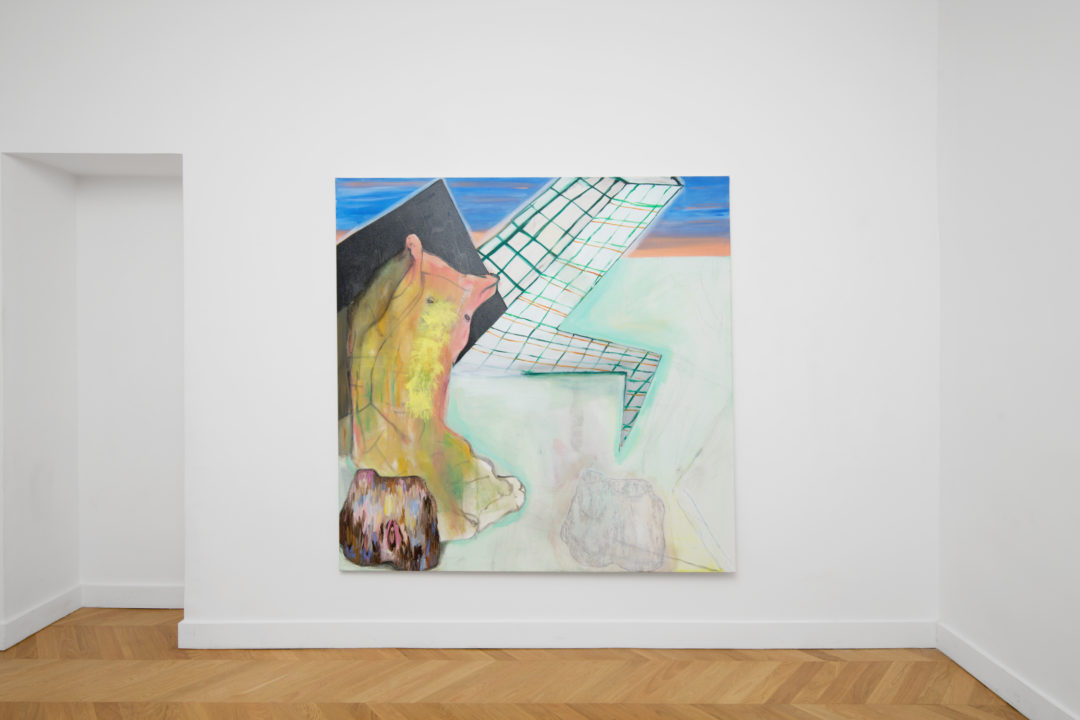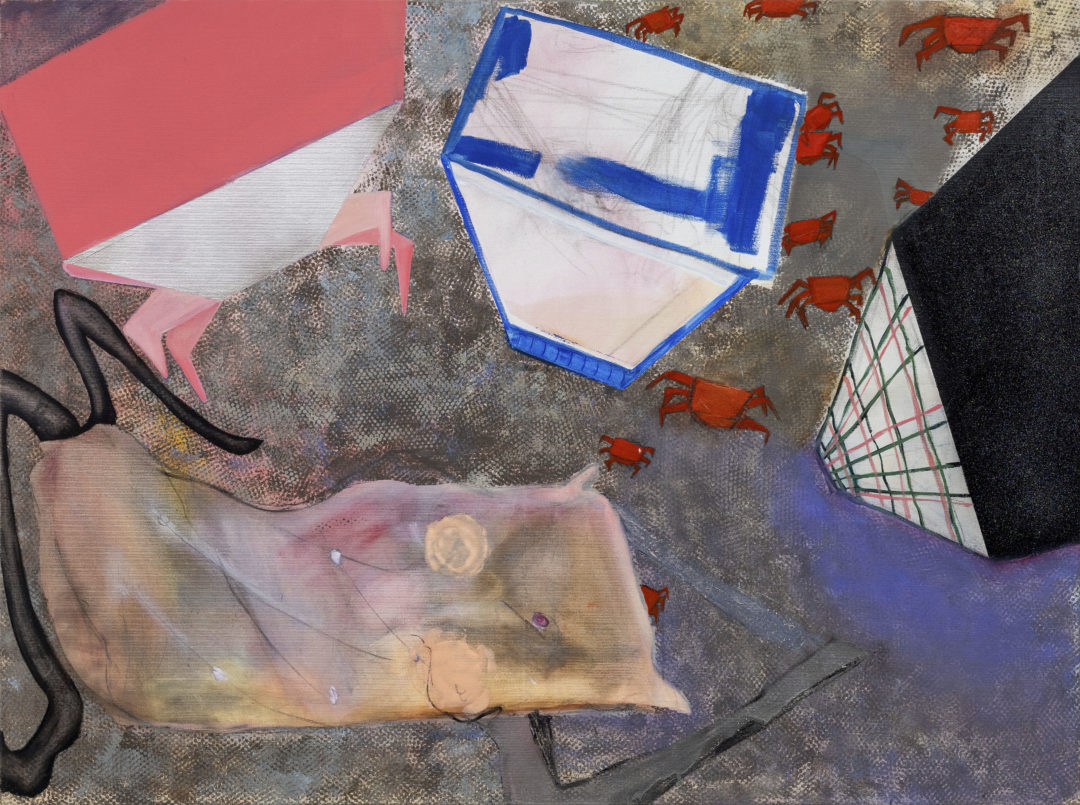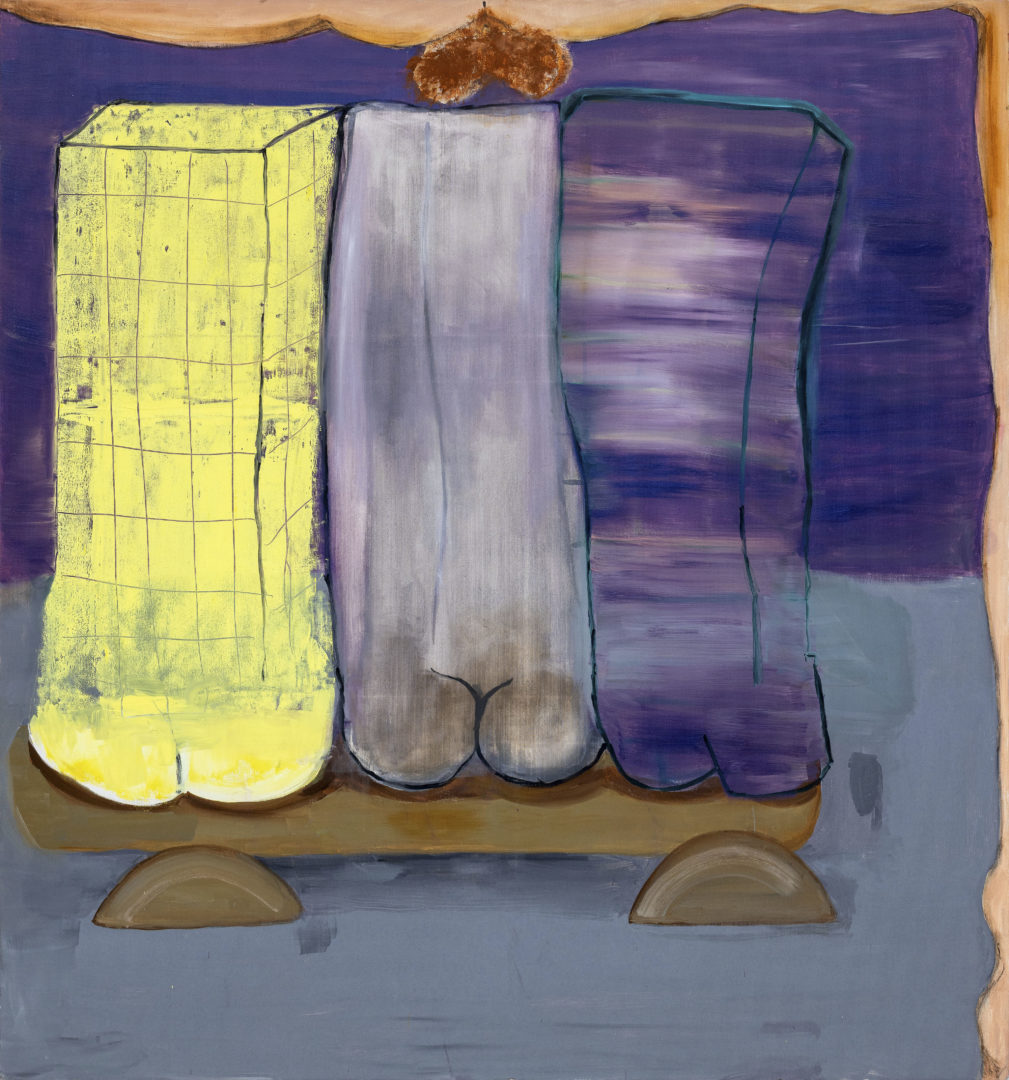Florence Reymond at Gaudel de Stampa

In Alain Damasio’s The Stealthies (Les Furtifs, 2019), a novel that envisions a near-future of hyper-connection, surveillance, and privatisation, the eponymous characters are elusive beings, evading the capture of the gaze and constantly merging with their environment despite speciesist divisions. Inspired by this reading, Florence Reymond created a series of the same name, produced and presented by L’Assaut de la menuiserie. She is showcasing eight paintings from this series in her first solo exhibition at Gaudel de Stampa, titled Daronne, solo dans la party.
The questioning of the regime of over-transparency and its evading presences brings into play the semantic ambiguity of the notion of visibilisation—alternately emancipating and stalking. In Florence Reymond’s work, wide shots and detailed views, cavalier perspectives and a sense of proximity are all devices that capture fragments of reality while challenging our perception, creating hiding places and vanishing points that escape our gaze.

As a first stratagem for passing incognito into the space of the painting, the elements develop the art of camouflage—going undercover from within, becoming their own hideout. The grid pattern, the urban equivalent of printed vegetation, camouflages the rebels as they blend into the built environment. They even make immobility a stealth mode of being. The leaning figure in Solo dans la party (porte de La Chapelle) resembles the building that supports them, to the point of becoming it: absorption by the city, and by the canvas, is a strategy of protection—an active yet equivocal strategy: it can signal the dissolution of the most precarious bodies.
There are also escapes, exits from the canvas. The grid, which leaps from one work to the next, conjures a network of coordinates (latitude, longitude, altitude), measurement, mapping, and spatial mastery. Florence Reymond cuts it up, twists it, and renders it unusable, as if to derail the lines set by cartographers and to make space wobble. Right angles transform into spikes, squares morph into vanishing lines, and cobblestones flash like lightning; the system is now deregulated, allowing for tearing, escape, and speed. Space continuously opens up new deviations—through the sideways movement of crabs, which allows for every conceivable concealment; through the torsion of a vehicle crushed on the canvas in Faire quiner les pneus; or through the impression of a displacement so fleeting that the imprint remains fresh in Berchus, déclans et foncedés, marks of a speed that exceeds the capturing power of paint.

Pampille, 2024, huile sur toile, 97 x 130 cm Courtesy : Gaudel de Stampa, Paris & the artist Crédits photo : Romain Darnaud
By dilating time in space, Florence Reymond offsets the abscissa and ordinate of her own roadmap and prevents herself from anticipating the result. This is because she practices the incursion of time (and therefore the very stealth of her gesture) by encouraging unconscious interventions—old content left intact that always behaves as if it had just emerged, achronic pockets of time that catch unexpectedly close to the canvas. She invites the crash of chance onto her works by using paints that are difficult to handle and mix, materials like fur that make the brush struggle, or by leaving the marks of her hesitations as much as those of her decisions. The work in progress and the finished work coexist in the space of the canvas. For Florence Reymond, paying attention to that which deviates inside our sense of unity, to the other within ourselves, allows us to pay attention to the other outside ourselves. The space within and the outside space, the unconscious and the hic et nunc are experiences that combine rather than polarise. The titles of the works, which bring together the slang of Saint-Étienne (‘pampille’, which means ‘party’) and recent lexical inventions (‘PLS’, which meaning young French speakers made derive from ‘recovery position’ to ‘the end of one’s rope’), give rise to jolts of meaning, incomprehension and surprise. They also let other voices speak for themselves, like the one that interjects ‘Daronne’ (French slang for ‘mum’) in the very title of the exhibition, thereby establishing the artist as a third person rather than the sole author. The framing bodies in Les Furtifs and Le sunset fout l’seum contain microcosms full of others. The living buildings and other interspecies hybrids that populate the canvases signal the permanent becoming of beings, their mutability. These accidental forms, which we didn’t see coming, are like enigmas: each one is a little familiar, but nothing is absolutely identifiable. The contemporary injunction to transparency—which weighs down the glass bell of Les Furtifs like a leaden cloak—always ends up being confounded: the glass surfaces filters, refracts, reflects.
Whether they are hiding, running away, unpredictable or indiscernible, the figures seem to be trying to escape a form of control that is itself stealthy. The notion of stealth is in fact part of the military lexicon, designating the ability of a machine to remain unperceived by radar. But the eye of surveillance could well be in our own socket, because we seem to be good detectors and undetectable: the supple curtain of the bodies-frames grants us the anonymous obscurity of the theatre audience; we capture close-ups as well as wide angles; we sometimes adopt the perched and immobile point of view of the sniper in ambush, sometimes a gaze in movement (as the contortions of the shapes could come from the fluctuations of the perspective). Are we birds or, as the crab shapes suggest, surveillance drones? The fugacity of our associations of ideas (such as the reclining posture of Solo dans la party (porte de La Chapelle), which we read as of a possible lookout’s) reveals the stealth of the processes of identification and recognition, which immediately takes the observer out of their neutrality.
The confusion that troubles the positions is fed by the strategy of appropriating the forms and codes of the other, by this disguise that, as we have seen, operates a shift from ‘resembling’ to ‘becoming’, from ‘hiding’ to ‘dissolving’. Beyond being a stratagem or a threat, becoming is a condition. As the processions of crustaceans suggest, it is the condition of the hermit crab, the stealth of the seas who becomes a gastropod killer and shell thief, not just to survive but to be. Perhaps, the becoming-building of the stealth of the city is a way of making what belongs to developers and public authorities their own, of appropriating their triumph rather than fleeing their crushing shadow. There’s no deciding between the precarious invisible, the lurking dissident, the hidden hunter and the living building. Florence Reymond reveals the reversibility of ideas, the senses of which light up and go out like the flashes of a party or of a firework, crab-stepping to the side as soon as we try to grasp them: stealth is the hallmark of the hunter and the hunted, camouflage is at once military, fragile and resistant, visibility is an opportunity as much as a danger, the blind spot is a place of life. She also leaves us dizzy with the ambivalence between the richness of being plural and the confusion of ‘at once’.

Back to the gallery, and perhaps on one’s feet. Yet here too, the succession of rooms leads to the work of other artists, and the windows look out over the gare du Nord, at the junction of rue La Fayette, rue de Dunkerque and rue du Faubourg-Saint-Denis. Other breakthroughs open up, in full and diagonally, through which Florence Reymond’s paintings escape and connect with reality.
______________________________________________________________________________
Head image : Florence Reymond, “Daronne, solo dans la party”, Gaudel de Stampa, Paris
Related articles
Ho Tzu Nyen
by Gabriela Anco
Hilma af Klint
by Patrice Joly
Plaza Foundation
by Andrea Rodriguez

